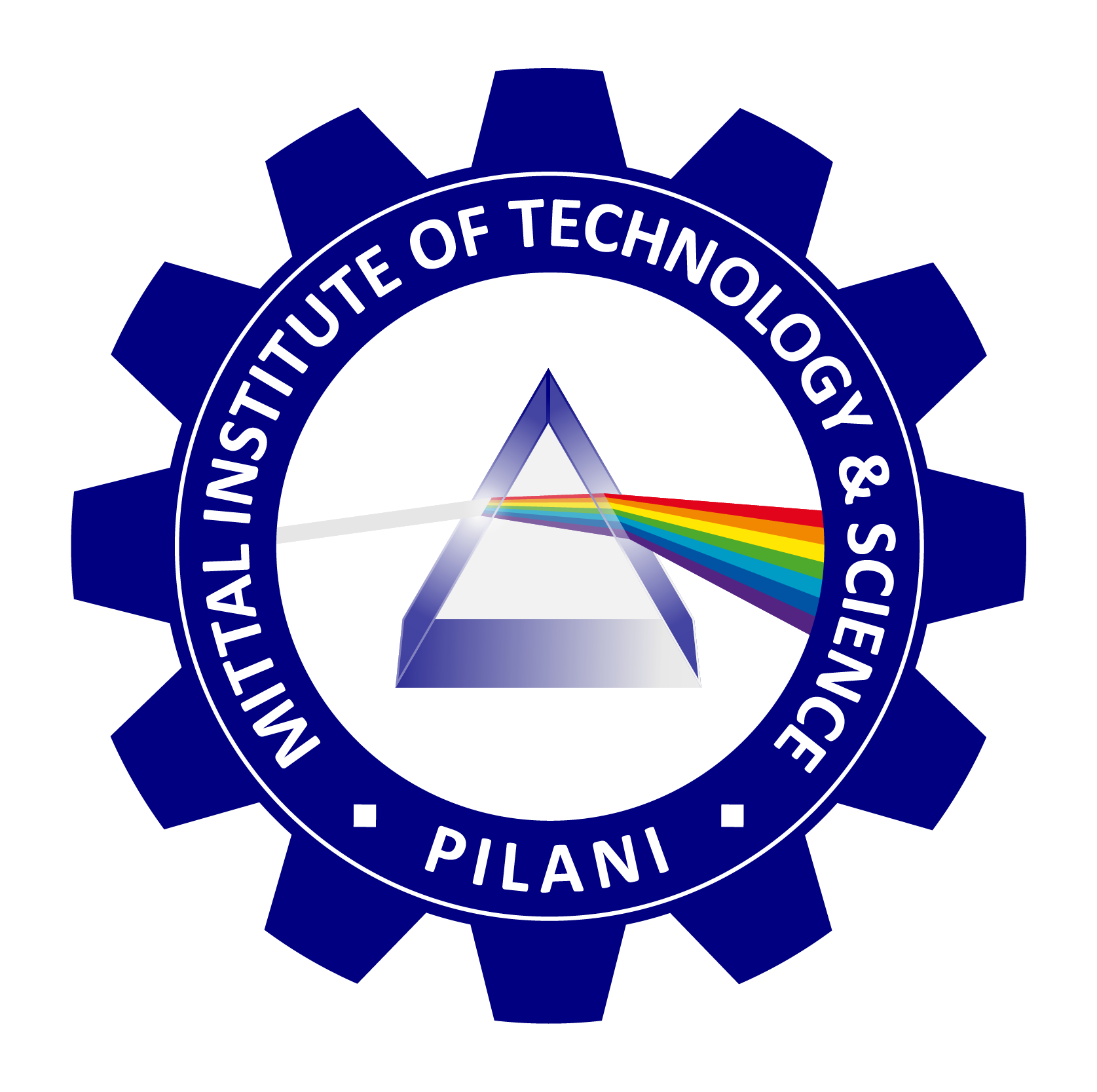
MITTAL INSTITUTE OF TECHNOLOGY & SCIENCE, PILANI
Telecommunications: 5G and 6G Networks and Architecture
Introduction
The telecommunications industry has undergone a significant evolution over the past few decades, characterized by the transition from 2G through 5G, with 6G poised to redefine the boundaries of digital communication. As each new generation of wireless networks emerges, it brings with it substantial advancements in speed, latency, connectivity, and architecture, revolutionizing industries and human interaction. Fifth-generation (5G) networks represent the current state-of-the-art in mobile communications, offering faster speeds, ultra-low latency, and the capacity to connect billions of devices. However, the future promises even more profound innovations with the advent of sixth-generation (6G) networks, expected to emerge in the 2030s. These networks will address not only the shortcomings of 5G but will also enable entirely new applications through cutting-edge technologies such as artificial intelligence (AI), quantum communications, and terahertz (THz) spectrum utilization.
This essay delves into the architecture and key characteristics of 5G and 6G networks, providing an in-depth comparison and exploring the challenges, opportunities, and innovations they represent. A particular emphasis is placed on the structural and functional aspects of these network architectures, focusing on the core technologies that underpin their design, operation, and future potential.
5G Network Architecture and Key Features
Fifth-generation (5G) wireless networks have revolutionized mobile communications, delivering enhanced performance across several dimensions: ultra-low latency (as low as 1 millisecond), massive connectivity (supporting up to 1 million devices per square kilometer), and high data rates (up to 10 Gbps). The architecture of 5G networks represents a significant departure from previous generations, moving from hardware-centric systems to more flexible, software-based architectures that are designed to handle a highly dynamic and heterogeneous environment.
- Core Network (5G Core or 5GC):
The 5G Core (5GC) is based on a cloud-native, service-based architecture (SBA). This allows for modularity, flexibility, and scalability, making it easier to deploy network functions in software and adapt to varying demands. It integrates Network Function Virtualization (NFV) and Software-Defined Networking (SDN), enabling network slicing and dynamic resource allocation. Network slicing is a key feature that allows for the creation of multiple virtual networks on a shared physical infrastructure, each tailored for different use cases such as enhanced mobile broadband (eMBB), ultra-reliable low-latency communication (URLLC), and massive machine-type communication (mMTC). - Radio Access Network (RAN):
5G employs a new radio access technology known as 5G New Radio (NR), which operates in both sub-6 GHz and millimeter-wave (mmWave) frequency bands. The mmWave spectrum offers significantly higher bandwidths, allowing for ultra-fast data transmission but at the cost of shorter range and greater susceptibility to obstacles. The RAN architecture in 5G is more flexible, supporting centralized and distributed deployment models through concepts such as Cloud-RAN (C-RAN), where baseband processing functions are virtualized and centralized in the cloud, leading to cost efficiencies and improved coordination between base stations. - Edge Computing:
Multi-access edge computing (MEC) is a core component of the 5G architecture, bringing data processing closer to the user by deploying servers at the network edge. This reduces latency and allows for real-time data processing, which is critical for applications such as autonomous driving, augmented reality (AR), and the Internet of Things (IoT). MEC allows for offloading compute-intensive tasks from end devices, enabling power efficiency and faster response times. - Network Slicing and Orchestration:
Network slicing is one of the most transformative features of 5G, enabling operators to partition their network into multiple slices, each optimized for a specific type of service. For instance, one slice may be optimized for low-latency applications such as remote surgery, while another may prioritize high throughput for streaming high-definition video. This requires sophisticated orchestration mechanisms, capable of allocating resources dynamically and ensuring isolation between slices. - Security:
5G introduces advanced security mechanisms through secure service-based architecture, enhanced encryption protocols, and AI-based anomaly detection. Given the anticipated proliferation of connected devices, the 5G architecture emphasizes zero-trust models and continuous authentication processes to mitigate the risks associated with IoT, cloud-based applications, and critical infrastructure.
6G Networks and Architecture: A Vision Beyond 5G
While 5G has brought significant advancements, 6G networks will push the envelope further, incorporating new technological paradigms to address the anticipated demands of the 2030s and beyond. The 6G vision centers on achieving extreme performance metrics: data rates of up to 1 Tbps, latencies below 100 microseconds, and pervasive connectivity. Moreover, 6G will integrate AI-driven network management, intelligent spectrum allocation, and a fusion of physical, digital, and biological systems.
- Terahertz Spectrum and High-Frequency Communication:
A significant leap in 6G technology will be the use of terahertz (THz) frequencies, which range from 0.1 THz to 10 THz. These frequencies offer extraordinary bandwidth, making it possible to achieve ultra-high data rates, but also face significant challenges related to propagation loss and signal attenuation. As such, new signal processing techniques, advanced antennas, and beamforming technologies will be essential to overcome these limitations. 6G networks will also rely heavily on reconfigurable intelligent surfaces (RIS) to manipulate electromagnetic waves, improving signal strength and efficiency in complex environments. - AI and Machine Learning in Network Management:
AI and machine learning (ML) will play an integral role in the operation and optimization of 6G networks. Intelligent algorithms will be used to manage spectrum resources dynamically, predict network traffic, optimize energy consumption, and enhance security through real-time threat detection. AI-based orchestration systems will autonomously manage network slices, adapting to changing conditions and user demands in real time. This will result in a highly adaptive and self-optimizing network architecture capable of handling the vast heterogeneity of devices, applications, and services expected in the 6G era. - Integration of Quantum Communications:
Quantum communication technologies, including quantum key distribution (QKD), will enhance security in 6G networks. QKD leverages the principles of quantum mechanics to ensure the unbreakable encryption of communication channels. The integration of quantum technologies will allow for the development of quantum networks, capable of facilitating secure communications over long distances and enhancing the overall resilience of the 6G infrastructure. - Holographic and Extended Reality (XR):
6G networks will support revolutionary applications such as holographic communications, extended reality (XR), and immersive virtual environments. These technologies will require extremely high data rates and low latency, which 6G will provide through the combination of THz frequencies, edge computing, and AI-driven network optimization. The convergence of the physical and digital worlds will enable applications such as virtual presence, tele-surgery, and industrial automation with unprecedented precision and interactivity. - Energy Efficiency and Sustainability:
One of the critical challenges for 6G is the need for energy-efficient communication technologies, particularly given the anticipated exponential growth in the number of connected devices and data traffic. 6G networks will need to incorporate energy-harvesting technologies, such as wireless power transfer and self-sustaining devices. AI-driven network management will also contribute to optimizing energy consumption by intelligently allocating resources and minimizing power usage during low-traffic periods. - Security and Privacy:
The complexity and scope of 6G networks introduce new security challenges, necessitating innovative solutions. Zero-trust architectures, AI-driven threat detection, and quantum-safe encryption methods will be critical components of the 6G security framework. Additionally, privacy-enhancing technologies (PETs) will ensure that user data is protected, even as 6G networks facilitate the widespread collection and analysis of real-time data from billions of devices.
Challenges and Opportunities in the Transition from 5G to 6G
The transition from 5G to 6G represents both significant challenges and opportunities. While 5G lays the groundwork for many emerging technologies, such as IoT, autonomous systems, and smart cities, 6G will expand the potential of these technologies to unprecedented levels. However, several key challenges must be addressed:
- Spectrum Management:
The use of higher frequencies, particularly in the THz range, presents challenges in terms of propagation, attenuation, and interference. Regulatory frameworks will need to adapt to accommodate the dynamic allocation and sharing of spectrum across different use cases. - Infrastructure Costs:
The deployment of 6G infrastructure, including base stations, edge computing nodes, and intelligent surfaces, will require substantial investment. Developing countries may face significant barriers to adoption, exacerbating the digital divide. Governments, industries, and academia will need to collaborate to create sustainable models for 6G infrastructure deployment. - Standardization and Interoperability:
Achieving global standardization for 6G technologies will be essential to ensure interoperability across networks and devices. Industry stakeholders must work together to define standards that balance innovation with the need for seamless communication across borders and industries.
The evolution from 5G to 6G networks represents a profound shift in telecommunications, driven by the need for faster, more reliable, and intelligent communications. While 5G has already transformed industries and enabled new applications, 6G will push the boundaries of what is possible in the digital realm. With advancements in AI, quantum communications, and terahertz spectrum, 6G will not only address the limitations of 5G but will also create new opportunities for holographic communications, extended

Professor Rakesh Mittal
Computer Science
Director
Mittal Institute of Technology & Science, Pilani, India and Clearwater, Florida, USA
